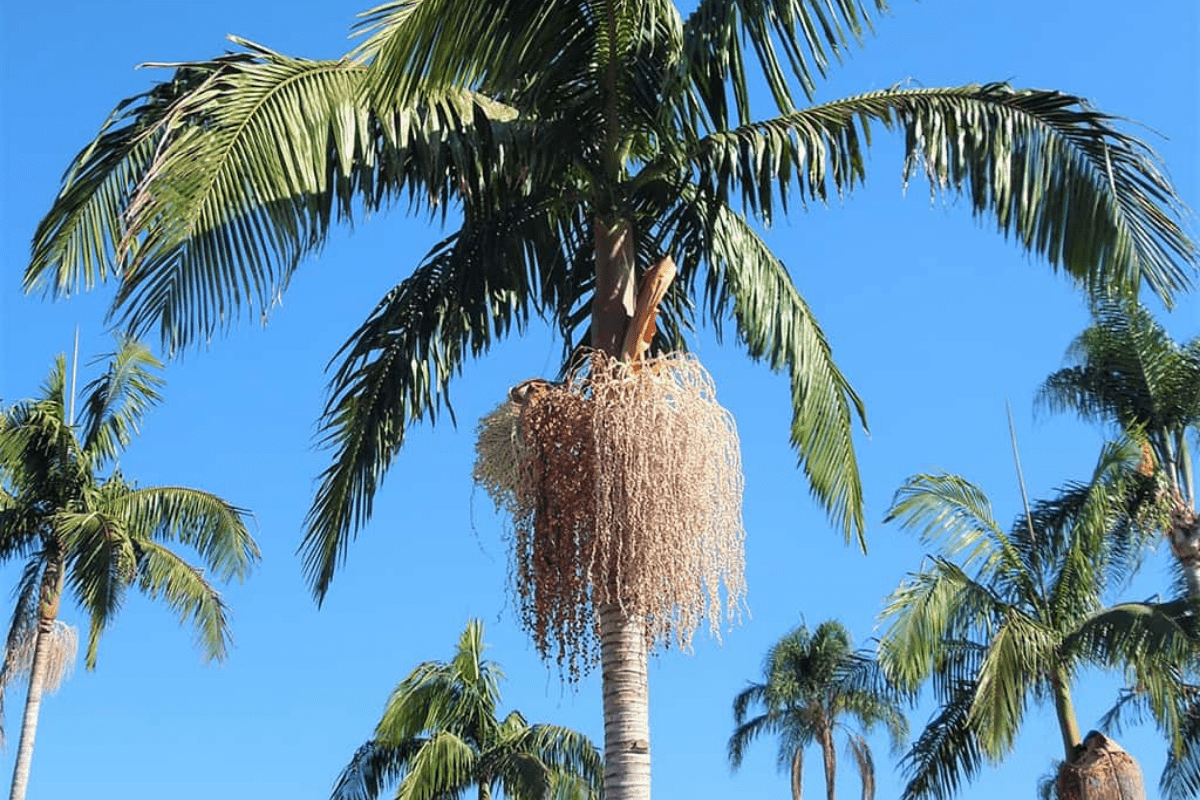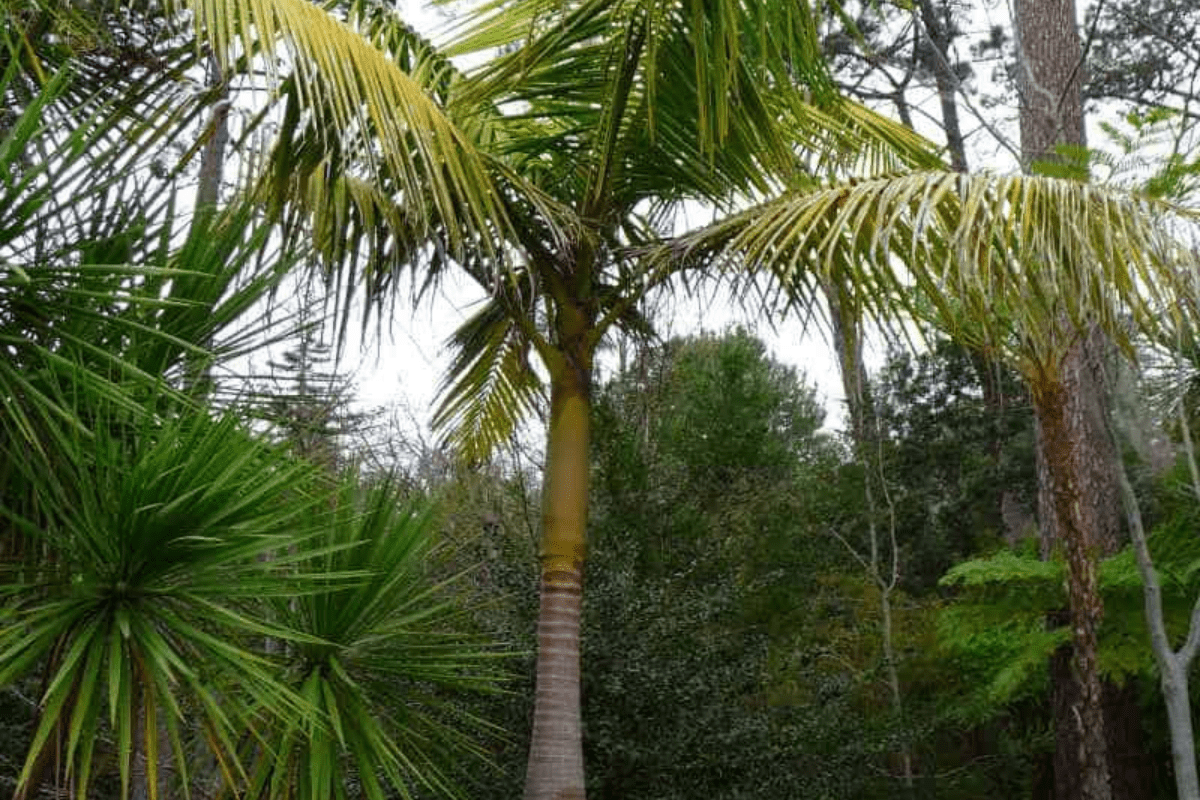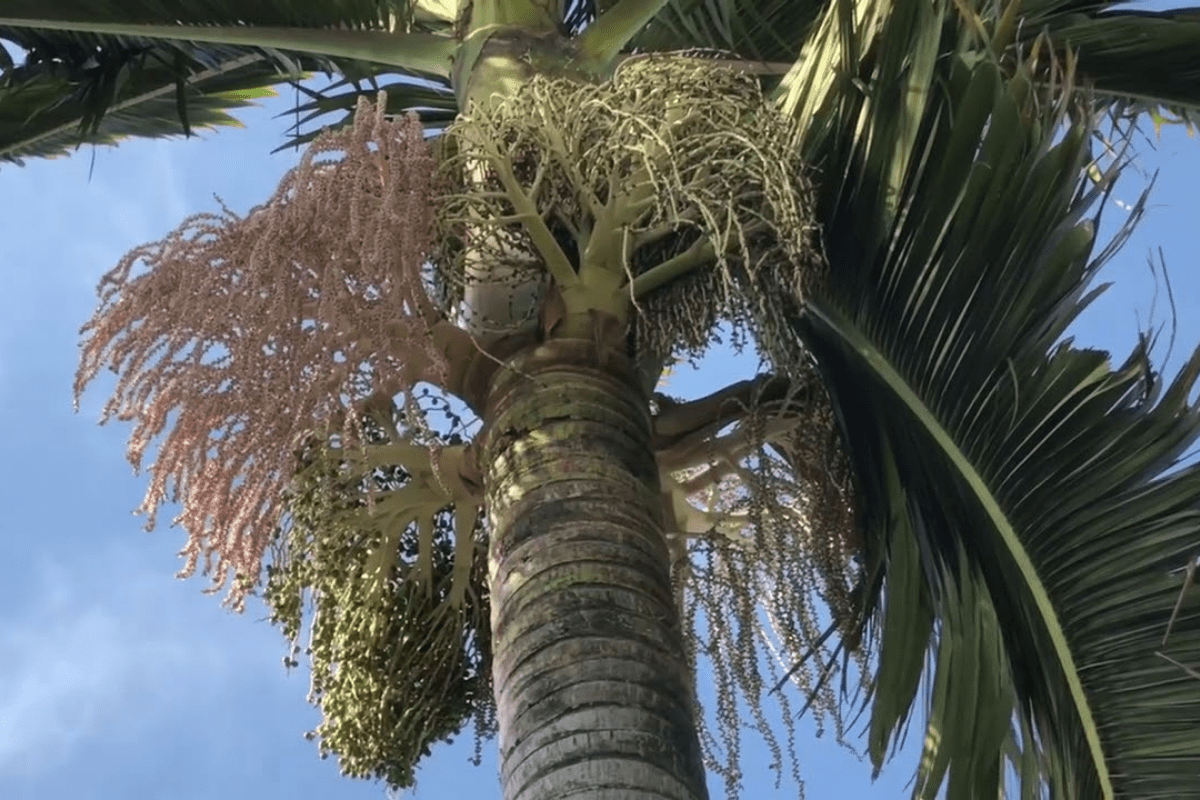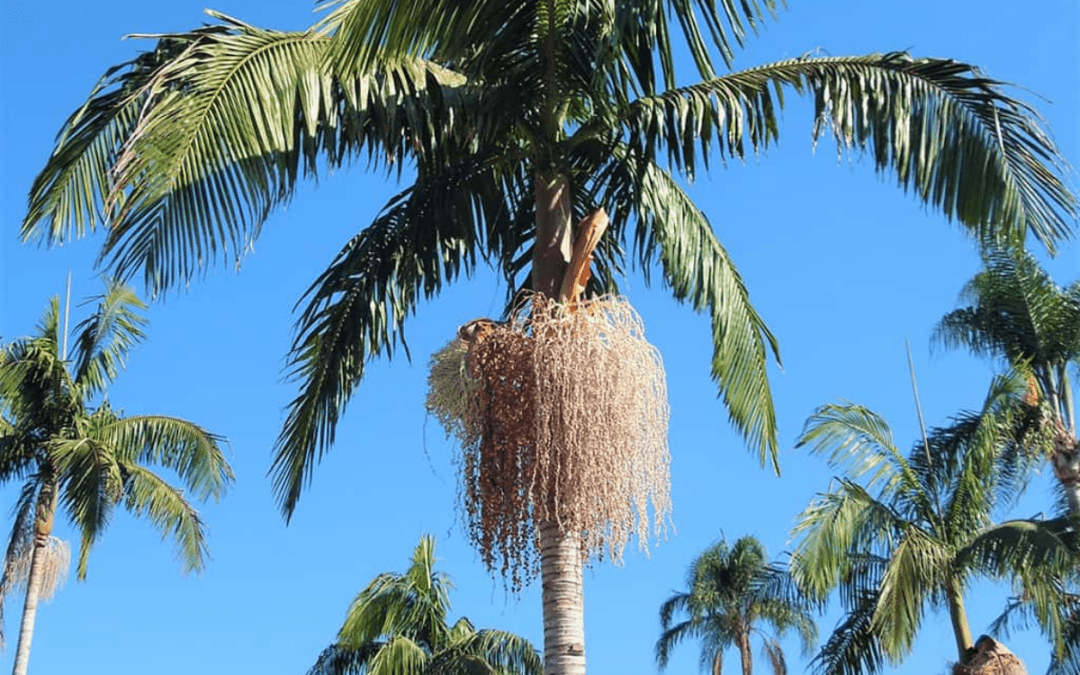While it is not the biggest of all the palms, it can grow up to 40-60 feet tall and demands attention anywhere it grows. Read below to learn all of the facts about the King Palm Tree.
What Does the King Palm Tree Look Like
The King Palm has a singular, grey, smooth trunk with a crown of lush, umbrella-shaped leaves. Each of the fronds can grow up to ten feet long. The pinnate, feather-shaped fronds are one and a half feet long and have a beautiful dark green color.
The King Palms Fronds
The fronds’ leaf base forms a shaft that is greenish to purple. The leaves are pressed together, with one next to the other in a tight center.
The King Palm tree is thought to be “self-cleaning” because, when the new leaves grow, they press against the other leaves, forcing them to peel away old material and shed, without requiring any pruning off by people.

When Do King Palm Trees Flower?
During the winter, multi-branched, creamy colored inflorescences (flower-bearing stems) break out of their bracts in the spot between the trunk and crown shaft– and, when fully expanded, the King Palm displays long strings of tiny mauve-pink to lavender tinted, fragrant, blossoms.
Male and female flowers bloom at the same time. After pollination, the flowers grow round, green fruit, 1 1/2 inch in diameter, ripening slowly to a sensational bright red in the summertime.
Where Does The King Palm Tree Come From
Australia is where this specific palm comes from, where it grows in the damp subtropical areas of Queensland and New South Wales. In Australia, it is called the Piccabeen Palm.
Its scientific name is Archontophoenix cunninghamiana. The genus name comes from the Greek word “archontos” (meaning leader);
What Are The Best Growing Conditions For A King Palm
Even with its subtropical origin, the King Palm Tree does quite well in our Mediterranean environment, specifically once well-established. It will always do better with added irrigation, but most King Palm Trees survive through significant dry spells. They do well in full sunlight.
King Palms will grow the best in a moist and well-drained soil bed. Under the best conditions, it can grow about a foot each year! They can be planted alone, or they can grow in groups.

What Can Damage King Palm Trees?
King Palm trees can suffer from infestations of mites or mealybugs, but it’s not normal. King Palms are also vulnerable to “pink rot,” a major (and in some cases lethal) fungal illness that normally affects stressed out or damaged palms.
If the soil they are planted in stays too damp for too long, they can develop “root rot.” If the temperature drops below 25 degrees, it can kill younger trees. You may also suffer palm tree trunk damage from storms if you live near the coast.
How Do You Keep A King Palm Healthy
The King Palm is extremely wind-tolerant, but its fronds look their best when not battered by the wind. If the color of the palm frond starts to fade to yellow, the King Palm is telling you it needs nitrogen and other nutrients.
Use plant food created especially for King Palms throughout late winter or very early spring to keep any damage from happening.

Do You Have A King Palm Tree?
If you want to learn more about King Palms, you can always reach out to a Savannah tree service. A quick Google search for “tree service near me” should do the trick. If you have a damaged or dead King Palm that you want off your property, a tree removal service like Top Tree Service Company could provide you with the help you need. Do you need a tree service in Savannah? Call Top Tree Service Company for a free tree inspection and estimate at 912-480-0132.

